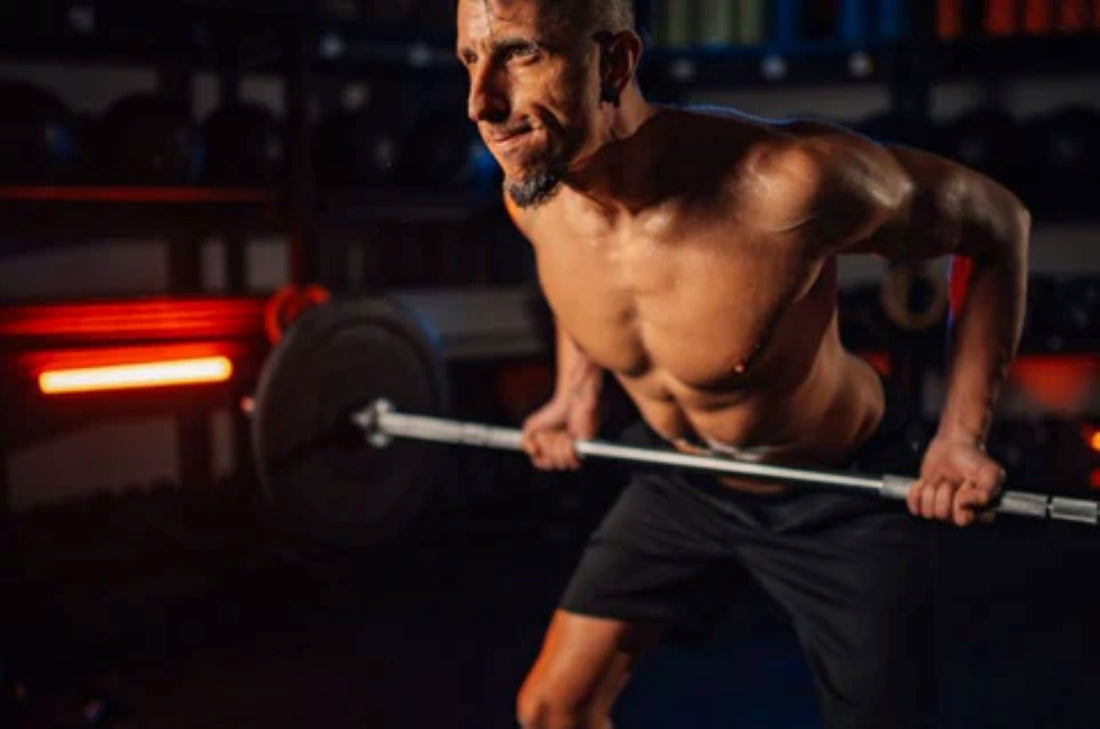
When it comes to building a strong, muscular back, two exercises often stand out: the Bent Over Row and the Pendlay Row. If you've ever wondered which of these two exercises is the most effective, you're not alone. In this detailed guide, we'll delve into the key differences between these movements, their unique benefits, and help you determine which one might be best suited for your fitness goals.
Understanding the Bent Over Row
The Bent Over Row is a compound exercise that primarily targets the muscles of the upper and middle back. This includes the latissimus dorsi, rhomboids, and trapezius. The movement also engages the biceps and rear deltoids, making it a comprehensive upper-body workout.
How to Perform the Bent Over Row:
- Begin by standing with your feet shoulder-width apart, holding a barbell with an overhand grip.
- Bend your knees slightly and hinge at the hips, keeping your back straight and torso at about a 45-degree angle to the floor.
- Pull the barbell towards your lower ribcage, squeezing your shoulder blades together at the top of the movement.
- Lower the barbell back to the starting position in a controlled manner.
One of the key advantages of the Bent Over Row is its versatility. You can perform it with various grips and stances, allowing you to target different parts of the back. This exercise is also great for improving overall core stability and strength.
Getting to Know the Pendlay Row
Named after its creator, weightlifting coach Glenn Pendlay, the Pendlay Row is a variation of the traditional bent-over row with a distinct difference. Unlike the Bent Over Row, each rep of the Pendlay Row starts from a dead stop on the floor, which makes it a powerful tool for building explosive strength and power.
How to Perform the Pendlay Row:
- Start with a barbell on the floor in front of you, feet shoulder-width apart, and grip the bar with a double overhand grip.
- Hinge at the hips and lower your torso until it is parallel with the ground, maintaining a flat back.
- Without allowing your torso to rise, explosively pull the barbell to your lower chest, leading with your elbows.
- Lower the barbell back to the floor, allowing it to come to a complete stop before starting the next rep.
The Pendlay Row is known for its emphasis on explosiveness and strict form. Because of the complete stop at the bottom of each rep, it eliminates the use of momentum, ensuring that the muscles of the back are doing all the work. This can lead to greater muscle activation and growth in the targeted areas.
Bent Over Row vs Pendlay Row: Key Differences
While both exercises are effective for developing back strength and muscle mass, there are some key differences to consider.
Range of Motion and Technique:
The Bent Over Row allows for a relatively continuous motion, which can help to keep tension on the muscles throughout the set. In contrast, the Pendlay Row starts from a dead stop on the floor with each rep, promoting power and explosiveness but possibly sacrificing continuous muscle tension.
Muscle Activation:
Due to the nature of the Pendlay Row's explosive start and complete stop, it generally activates more muscle fibers per rep. However, the Bent Over Row, with its ability to be performed with various grips and stances, can target a broader range of muscles in the back.
Difficulty and Strength Requirements:
The Pendlay Row typically requires more lower back and core stability due to the parallel torso position. It also requires a good amount of explosive strength to perform correctly. The Bent Over Row, being slightly less strict in form, allows for slightly heavier weights to be used, which can be beneficial for overall muscle growth.

Which Exercise Should You Choose?
The choice between Bent Over Row and Pendlay Row largely depends on your fitness goals and experience level.
If you're aiming for overall back development with a focus on muscle hypertrophy, the Bent Over Row might be the better option due to its ability to be performed in various forms and its continuous muscle tension.
On the other hand, if your goal is to build explosive strength and improve powerlifting performance, the Pendlay Row is an excellent choice. Its emphasis on strict form and explosive power can translate well to other lifts, such as the deadlift and clean.
Incorporating Both Exercises into Your Routine
For best results, consider incorporating both exercises into your training regimen. This allows you to reap the benefits of each movement, promoting balanced development of strength and muscle mass.
Sample Workout Routine:
-
Day 1:
- Bent Over Row: 4 sets of 8-10 reps
- Complement with other back exercises like pull-ups or lat pulldowns. -
Day 2:
- Pendlay Row: 4 sets of 6-8 reps
- Complement with other power movements like deadlifts or power cleans.
By alternating between these two rows, you can ensure that your back training is both comprehensive and effective. Don't forget to pay attention to your form and start with weights that allow you to maintain proper technique throughout each set.
Ready to elevate your back workout? Whether you choose the Bent Over Row, the Pendlay Row, or both, consistency and proper form are key to seeing the best results. Happy lifting!





















